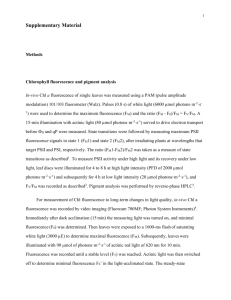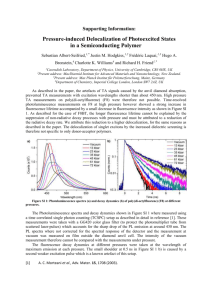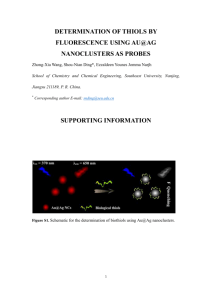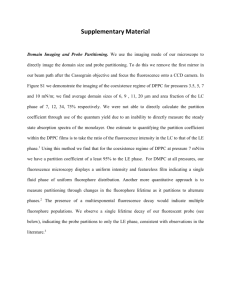file - BioMed Central
advertisement
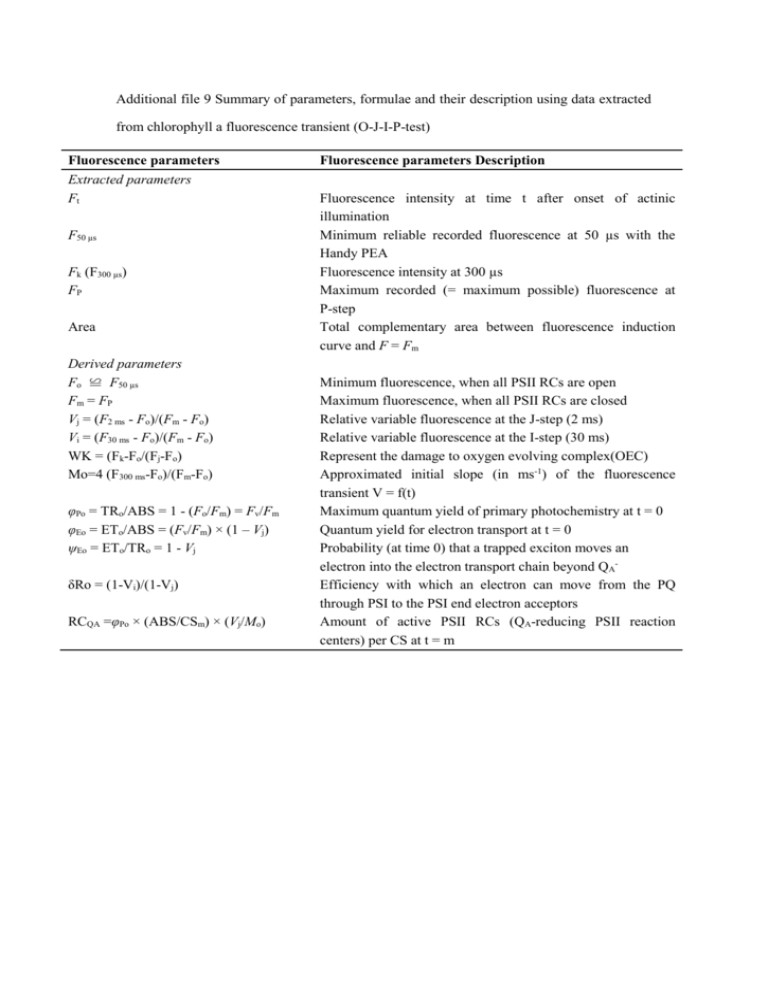
Additional file 9 Summary of parameters, formulae and their description using data extracted from chlorophyll a fluorescence transient (O-J-I-P-test) Fluorescence parameters Extracted parameters Ft F50 µs Fk (F300 µs) FP Area Derived parameters Fo ≌ F50 µs Fm = FP Vj = (F2 ms - Fo)/(Fm - Fo) Vi = (F30 ms - Fo)/(Fm - Fo) WK = (Fk-Fo/(Fj-Fo) Mo=4 (F300 ms-Fo)/(Fm-Fo) φPo = TRo/ABS = 1 - (Fo/Fm) = Fv/Fm φEo = ETo/ABS = (Fv/Fm) × (1 – Vj) ψEo = ETo/TRo = 1 - Vj δRo = (1-Vi)/(1-Vj) RCQA =φPo × (ABS/CSm) × (Vj/Mo) Fluorescence parameters Description Fluorescence intensity at time t after onset of actinic illumination Minimum reliable recorded fluorescence at 50 µs with the Handy PEA Fluorescence intensity at 300 µs Maximum recorded (= maximum possible) fluorescence at P-step Total complementary area between fluorescence induction curve and F = Fm Minimum fluorescence, when all PSII RCs are open Maximum fluorescence, when all PSII RCs are closed Relative variable fluorescence at the J-step (2 ms) Relative variable fluorescence at the I-step (30 ms) Represent the damage to oxygen evolving complex(OEC) Approximated initial slope (in ms-1) of the fluorescence transient V = f(t) Maximum quantum yield of primary photochemistry at t = 0 Quantum yield for electron transport at t = 0 Probability (at time 0) that a trapped exciton moves an electron into the electron transport chain beyond QAEfficiency with which an electron can move from the PQ through PSI to the PSI end electron acceptors Amount of active PSII RCs (QA-reducing PSII reaction centers) per CS at t = m






